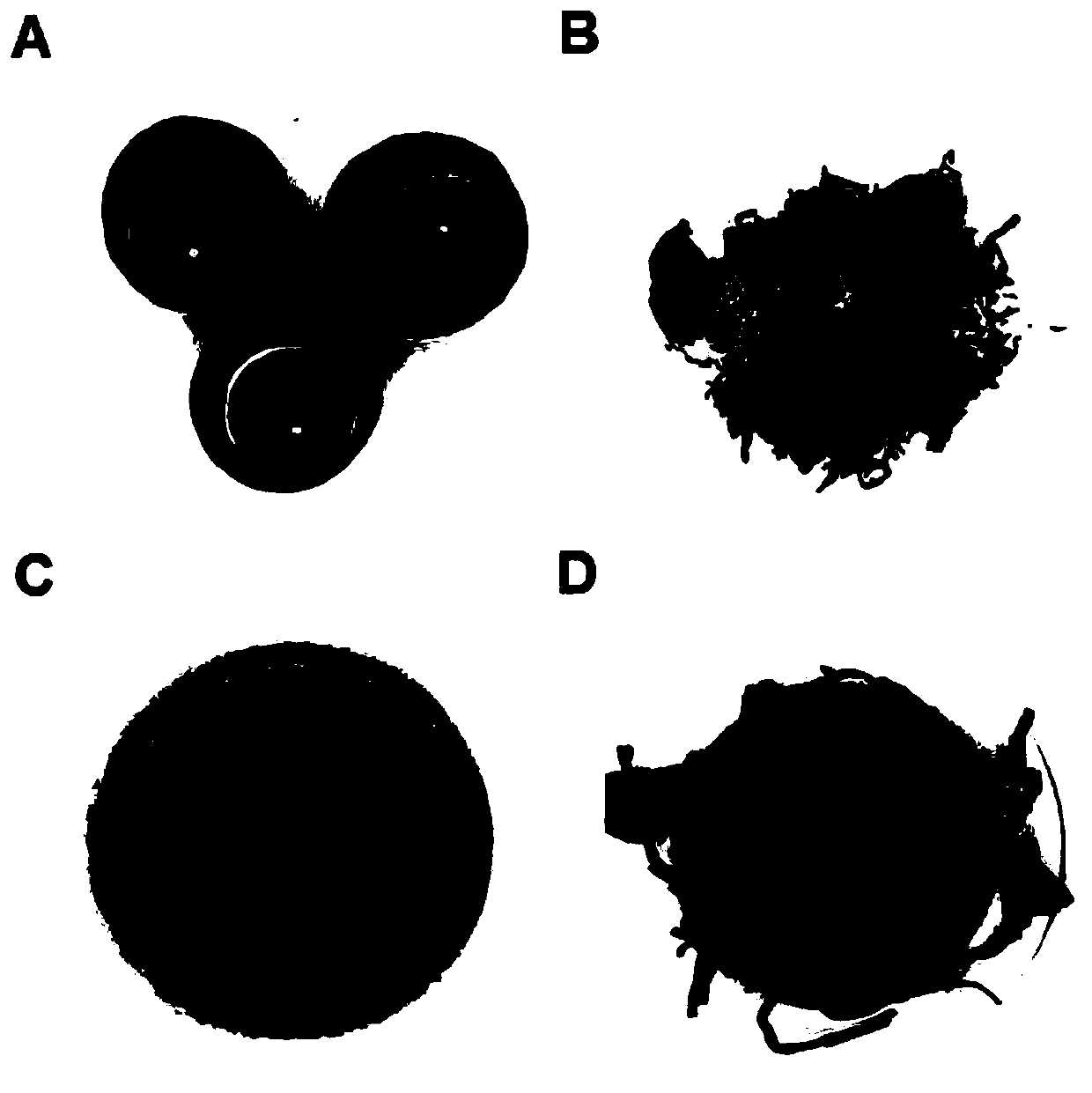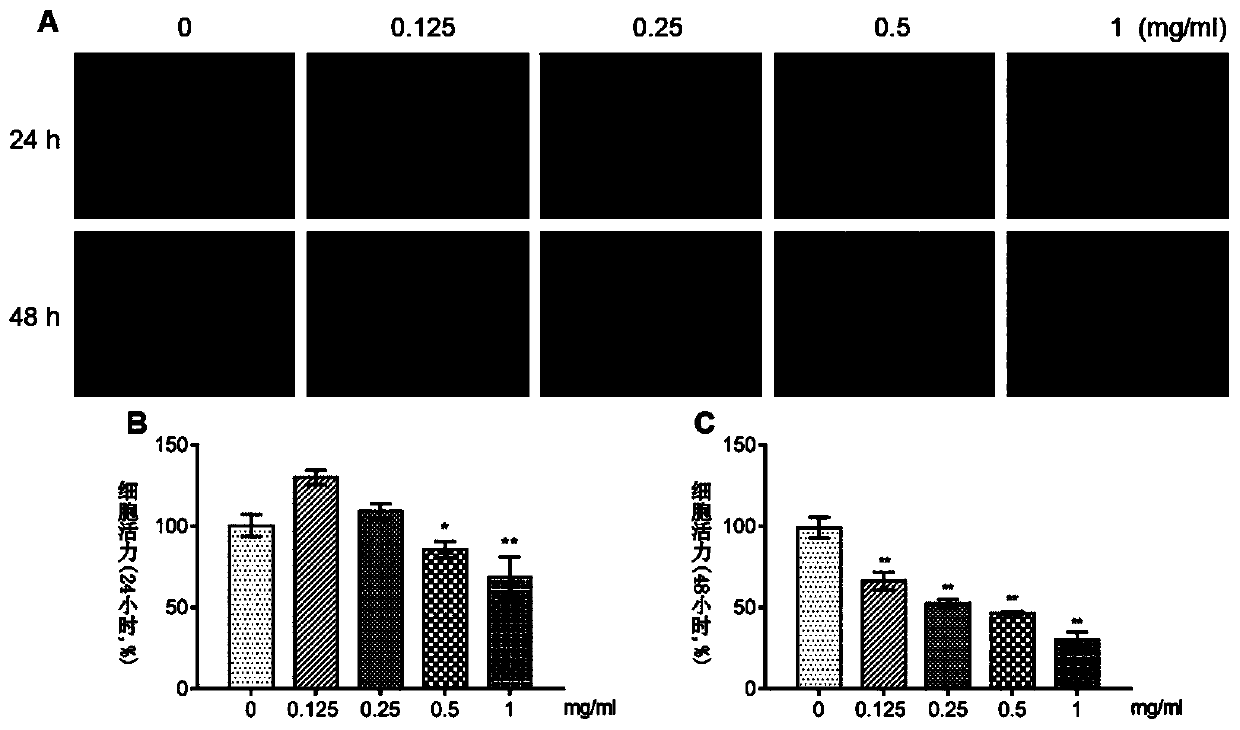Citrus black tea extract
A black tea extract and extract technology, which can be applied in the fields of food science, drug combination, plant raw materials, etc., can solve the problems of no citrus black tea composition and biological activity system research.
- Summary
- Abstract
- Description
- Claims
- Application Information
AI Technical Summary
Problems solved by technology
Method used
Image
Examples
Embodiment 1
[0033] Embodiment 1: the preparation of orange black tea extract
[0034] Weigh a certain amount of citrus black tea, crush it into a coarse powder, add boiled distilled water according to the ratio of material to liquid (W / V, g / mL) = 1:20, and extract in a water bath at 90°C for 30 minutes, filter the tea soup while it is hot, and repeat the extraction for 3 The second time, the tea soups were combined, condensed by rotary evaporation at 60°C to about 1 / 10 of the original volume, and freeze-dried to obtain the citrus black tea freeze-dried powder.
Embodiment 2
[0035] Embodiment 2: detection and experimental method:
[0036] 1. Detection of biochemical components of citrus black tea and monomer components of catechin, hesperidin and caffeine
[0037] Tea polyphenols content: GB / T 31740.2-2015 "Test method for the content of tea polyphenols and catechins in tea"; free amino acid content: GB / T 8314-2013 "Determination of the total amount of free amino acids in tea"; soluble sugar Content: anthrone-sulfuric acid colorimetric method; theaflavin, thearubigin, theabrownin total determination: system colorimetric method.
[0038] Chromatographic column: phenomenex C18 column (150×4.6mm, 5μm); detection wavelength 280nm; detection temperature 28°C; mobile phase A: aqueous solution containing 0.5% acetic acid, 1% acetonitrile and 2% methanol, mobile phase B: containing 0.5% Acetic acid, 10% acetonitrile and 20% methanol in water; elution steps: within 30min, phase A from 72.5% to 20%, phase B from 27.5% to 80%, after 30min within 5min, phase...
Embodiment 3
[0128] Embodiment 3: experimental result
[0129] Table 1 Conventional biochemical components and content (%) of orange black tea extract
[0130]
[0131] Through this analysis, it can be seen that the orange black tea extract mainly contains: tea polyphenols, free amino acids, flavonoids, soluble sugars, theaflavins, thearubigins and theabrownins.
[0132] Citrus black tea extract mainly contains: tea polyphenols, free amino acids, flavonoids, soluble sugars, theaflavins, thearubigins and theabrownins. The parts by weight are: 10-30 parts of tea polyphenols, 0.1-3 parts of free amino acids, 0.1-4 parts of flavonoids, 0.1-2 parts of soluble sugar, 0.1-1 parts of theaflavins, 0.1-2 parts of thearubigins part and 0.1-8 part of theabrownin.
[0133] Table 2 Composition and content of catechins, flavonoids, caffeine and gallic acid in orange black tea (mg / g)
[0134]
[0135] The abbreviations in this table represent the following meanings respectively: catechin (C), epi...
PUM
 Login to View More
Login to View More Abstract
Description
Claims
Application Information
 Login to View More
Login to View More - R&D
- Intellectual Property
- Life Sciences
- Materials
- Tech Scout
- Unparalleled Data Quality
- Higher Quality Content
- 60% Fewer Hallucinations
Browse by: Latest US Patents, China's latest patents, Technical Efficacy Thesaurus, Application Domain, Technology Topic, Popular Technical Reports.
© 2025 PatSnap. All rights reserved.Legal|Privacy policy|Modern Slavery Act Transparency Statement|Sitemap|About US| Contact US: help@patsnap.com



